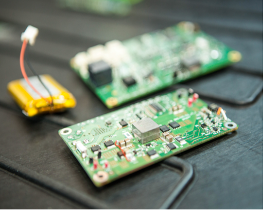GenMPC
Patented (PCT Nr. PCT/EP2017/050454; ITALY Patent Nr. IT102016000002586; USA Patent Nr. US11,031,791; CHINA Patent CN2017800062620) Model Predictive Control based Lithium-ion Battery Management System.
GENBMS addresses in particular the disequilibrium that is always present when connecting several modules in parallel due to the different internal impedance among the modules. Dissimilar impedance properties lead to largely unequal (even greater than 100%) electrical currents supplied by each module. This behavior leads to fading of the capacity of the battery pack or, even, triggers the internal protections of one of the modules due to excessive current during cycling.
Our sharing technology regulates the currents among the modules connected in parallel to be equal within 3%. This function greatly improves the balancing of the cells, the lifetime and efficiency of the battery pack.
Large format Lithium-Ion battery packs usually rely on a single centralized Battery Management System for many cells connected in parallel in order to increase the battery capacity. The drawback of this approach is the reliability, which is reduced because a single failure in the BMS or in a cell causes the shutdown of the entire battery pack.
Our approach to large Lithium-Ion battery packs is based on modular architectures with several self-protected modules of reduced capacity, each having its own smart BMS. This method brings the advantage of greatly increasing the reliability of the whole battery pack. In case of failure of a module only the module shuts down while the overall battery pack continues to operate albeit with slightly reduced performances.
Our innovative and patented current sharing technique among the modules in parallel avoid this drawback and the modular architecture can be exploited in its full potential.
Battery Control Approach
Lithium-Ion batteries are one of the key components of the green revolution and it is of paramount importance to know, in real time, how much charge remains in the battery (SOC) and, as all batteries age with time, what is the remaining total capacity (SOH) of the battery.
SOC and SOH are difficult to estimate accurately because they depend both on inaccessible internal physical states of the battery. GENSOH is a suit of algorithms based on an advanced physical / electro-chemical model of a Lithium-Ion cell that is able to estimate accurately in real time SOC and SOH from measurements of voltage, current and temperature of the cells that make the battery. GENSOH code is optimized to run in real time directly on the BMS or on a separate micro-controller communicating with the BMS via CAN.
Differently from most of the methods used by existing BMSs that require the Lithium-Ion battery to be periodically recharged at 100% in order to keep the accuracy at an acceptable level, GENSOH accuracy in estimating both SOC and SOH do not decrease with time due to the physical-based model of the lithium-ion cell and real time estimation of the cell internal states.
GENSOH error in estimating SOC is less than 1%, whereas in estimating SOH is less than 2%. These accuracies are preserved throughout the entire life of the battery pack. For a comparison, existing methods have accuracies that are often higher than 5-15% when the battery has not been fully recharged in the recent past. GENSOH estimates cycle life and calendar life of the battery at different storage and cycling conditions.
GENSOH integrates a Real Time Multi-Objective Optimization algorithm which is embedded into GENBMS to further reduce the overall total cost of ownership by extending lifetime and improving efficiency of li-ion battery module. Safety and long recharging times, along with capacity and power fade, remain the major concerns for lithium-ion batteries. The electro-chemical model of GENSOH mimics the outside behavior of the lithium-ion cell, predicts the internal states of lithium-ion cells being firmly grounded on the internal cell behavior at the deepest level.
GENMPC is a model predictive closed-loop control strategy. The problem solved by GENMPC in real time is to minimize a target (i.e., RUL) or a combination of different internal battery states (i.e., RUL with SOP). In the latter case the GENMPC finds the best trade-off among the different objectives. The objective function consists of a set of electro-chemical models of the lithium-ion cell ageing subjected to a set of physical and operational constraints. GENMPC searches the best-fit charge/discharge profile to optimize the battery operations, e.g., maximizing the battery life extension.
The GENMPC computes, at each time step, the charge/discharge current set point that minimizes, while satisfying the constraints, the objective function over a specified time interval.
GENMPC uses at each time step the actual estimated states of the battery, calculated by GENSOH (i.e., the Observer), and the future estimated states are calculated by the Predictor. At the subsequent step the process is repeated using the new updated measured inputs/outputs (I, V, T) for estimating the present states of the battery. Doing so, GENMPC effectively becomes a closed loop, improving dramatically the rejection of the NMPC to disturbances.
Key Features
- Modular concept
- Embedded charger
- Web monitoring, remote diagnostics, and maintenance
- Suitable for scalability and redundancy
- Improved reliability
- Improved efficiency
- Optimize total cost of ownership of lithium batteries
- Electrochemical model at the cell and pack levels for offline and online state of health (SOH) estimation
- Electrochemical model-based State of Charge (SOC) and State of Health (SOH) real time estimator
- Does not require frequent full recharge of the battery to retain high accuracy
- Calendar life estimation
- Cycle life estimation
- Optimized control strategy extending lifetime of the battery





